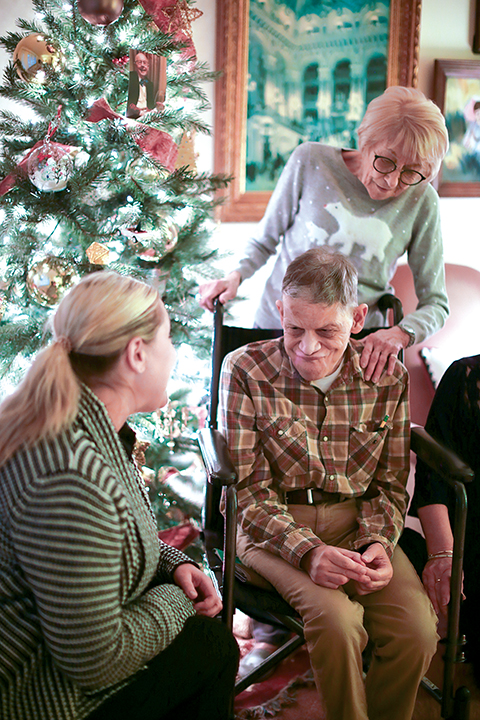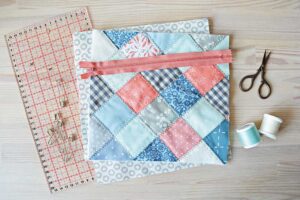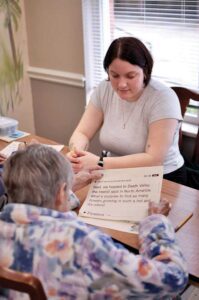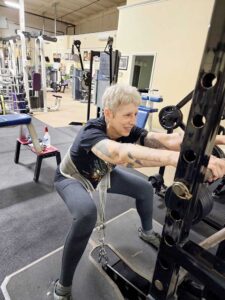Right at Home® How to Be Better Prepared for Successful Aging & Aging in Place
Brush and floss your teeth. Save and invest your money wisely. Eat nutritiously. Stay active. Surround yourself with caring, positive people. The list goes on for sound advice on how to prepare for “successful aging,” a term credited to John Wallis Rowe, M.D., and psychology and public health professor Robert L. Kahn, Ph.D.
In their “Successful Aging” book, Rowe and Kahn noted that flourishing as you age includes: (1) safeguarding your physical health and avoiding illness, disease, and disability; (2) maintaining solid cognitive and physical abilities; and (3) staying actively engaged with life and relationships.
While everyone from gerontologists to financial planners to medical doctors and elder attorneys debate how to prepare for aging well, a Forbes “What Is Successful Aging?” article sums up the process. “Meaningful aging does not involve ‘winners or losers’ in terms of longevity and health,” the article states, “but rather the need to focus on what is most meaningful to a person, especially in older age.”
Sometimes that focus means “Aging in place.” What is Aging in Place? It describes the desire to live in your own home in later life, as long as you are able. Remaining in your own home may involve social support and care services to help you live safely and independently. Ensuring your living environment has been adapted to your abilities—including necessary home modifications—is key to aging in place successfully.
The American Association or Retired Persons (AARP) reports that nearly 90 percent of seniors want to stay in their own homes as they age. AARP research further notes that 69 percent of aging parents and 75 percent of their adult children think about the parents’ ability to live independently in the years ahead. But certain aging and health challenges can affect everyday activities for older adults inside and outside the home.
A great example of “Successful Aging” and “Aging in Place” is Right at Home Peoria’s wonderful client Marilyn. Marilyn has managed to maintain her health, physical abilities, social life, and relationships into her 90’s, and has a special needs son, Jeffrey, who she still cares for, which is why it’s so important for her to stay in her home. Marilyn and her family realized that she needed a little extra help with some tasks at home. They called Jennifer Pearce, owner of Right at Home Peoria In Home Care and Assistance and decided that Right at Home was the perfect solution to help her fill those gaps! Pearce provides a very caring and compassionate caregiver, Linda, to aid Marilyn with her needs at home, as well as companionship. During a recent emergency, Linda was there above and beyond to support Marilyn and Jeffrey during their time of need, but that’s not unusual behavior for Right at Home caregivers—it’s a matter of caring.
Unsafe Aging Conditions
As loved ones age, balance becomes a significant issue due to a variety of factors, including physical weakness, medications, and cognitive and visual impairment. Normally a source of comfort for aging loved ones, the home can become hazardous without a fall-preventative strategy. Right at Home suggests you proactively and regularly assess the senior loved one’s home for anything that might be a health risk. In addition, you should determine whether your loved one can do the following in a safe manner:
- Go up/down stairs
- Get in/out of bathtubs/showers
- Get up from/sit down on beds, chairs, and toilets
- Reach up/bend down to retrieve items from closets and shelves
- Drive
- Use public transportation
- Maintain and keep up the home
- Manage one’s health
Aging in place requires an individualized plan that carefully considers a person’s functional abilities and any hazards and obstacles in the home. If you or your older loved one want to age in place—safely and comfortably—making practical home modifications may be the most beneficial solution. Be sure to discuss any of these risk factors with your physician.
Making Home Safe Again
For individuals who are relatively healthy but are starting to experience or are anticipating aging changes, these types of home modifications could help as they age. Actions such as adding additional lighting, removing slick flooring, and de-cluttering high foot traffic areas can help. Individuals with changing or chronic health conditions that affect balance and/or mobility will need a thorough assessment of how they function in their living environment. Home modifications could include:
- Add bathroom grab bars
- Widen doorways
- Secure a personal emergency alert system
- Remove steps from entrances/install ramp
- Convert doorknobs to handles• Raise electrical outlets
- Lower electrical switches
Any additions to making your loved one’s home safe again will increase safety, give greater freedom to live independently, be flexible for changing health needs, and will give peace of mind to family. Homeowners should always check with their HOAs or local Planning Departments to comply with local ordinances.
Any Difficulty at Home With…
Walking around?
- Wear shoes and slippers with nonslip soles that grip the floor.
- Consider using a cane or walker to help maintain balance.
Getting up from chairs?
- Use sturdy chairs with armrests.
- Add firm foam pads to chair and sofa seats.
Getting up from the bed?
- Move the bed against the wall to prevent the bed from sliding.
- Replace the existing mattress with one thinner to lower the bed height or with one thicker to raise the bed height.
- Attach a handrail near the bed.
Getting in and out of the bathtub or shower?
- Consider a tub/shower chair and grab bars (towel bars are not designed for this).
- Place nonskid rubber mats or decals on the tub/shower floor.
Transitioning to the toilet?
- Consider an elevated toilet seat and grab bars.
Getting objects from kitchen cabinets and closet shelves?
- Store everyday dishes/kitchen supplies within easy reach.
- Keep items no lower than waist level or no higher than shoulder height to avoid excessive bending, stopping, and reaching.
- If you must use a step stool, get one with a bar to hold on to; never use a chair as a step stool.
Walking up and down steps or stairs?
- Don’t rush; take your time and look directly at each step.
- Don’t carry large packages or baskets that obstruct your vision.
- Watch as you place each foot firmly on the steps.
- Clear stair steps of any items.
- Add handrails to all steps and stairs.
- Consider installing extra lighting at the top and bottom steps.
About Right at Home
Founded in 1995, Right at Home offers in-home companionship and personal care and assistance to seniors and adults with disabilities who want to continue to live independently.
The Peoria office of Right at Home is locally owned and operated by Jennifer Pearce, a Bradley University graduate. Even in the little things, we make sure your care is Right at Home, and we are dedicated to improving your quality of life. We offer companionship and safety supervision, monitoring and everyday health reminders, a helping hand with laundry, groceries and other errands, assistance with doctor visits and follow-up care, and meal planning and preparation. We can assist with ambulation and dressing assistance, bathing and other personal care services in Peoria and Tazewell counties. Right at Home Peoria is independently owned and operated and directly employs and supervises all caregiving staff, each of whom is thoroughly screened, trained, and bonded/insured prior to entering a client’s home. Right at Home Peoria can help you or your loved one “Successfully Age in Place at Home”.
For more information, contact Right at Home Peoria at www.rightathome.net/peoria at 309-327-0808 or by email at [email protected].










